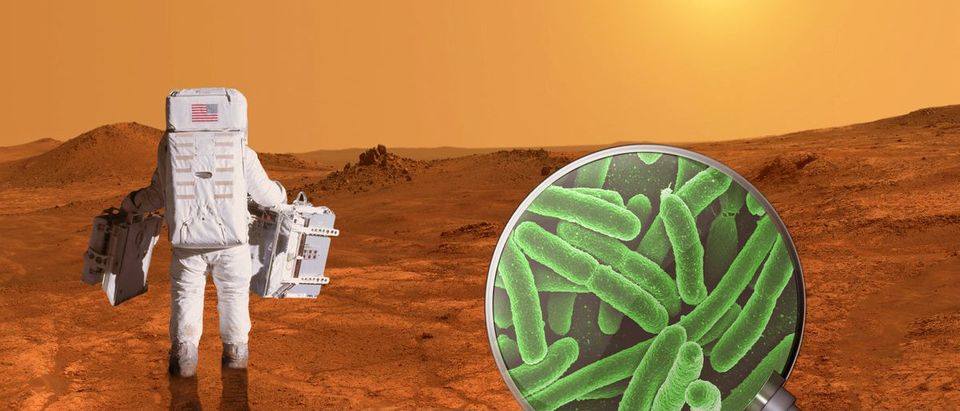New data from the Curiosity rover suggests Mars could have been habitable in the distant past.
The NASA study, published Monday, analyzed several mineral samples and found they likely formed in a fully liquid water environments in the distant past. This strongly suggests water covered much of Mars while when life was just beginning on Earth.
“These layers were deposited about 3.5 billion years ago, coinciding with a time on Earth when life was beginning to take hold,” Dr. Elizabeth Rampe, a scientist at NASA’s Johnson Space Center, said in a press statement. “We think early Mars may have been similar to early Earth, and so these environments might have been habitable.”
The minerals suggest several different liquid water environments existed on ancient Mars, as they were probably formed in acidic and oxidizing conditions. One of the mineral samples only forms in the presence of liquid water with a near-neutral acidity, indicating that the environment of Mars at the time was conducive to life.
Curiosity observed 650 feet of rocks laid down over hundreds of millions of years and found that Mars’ environment changed considerably over its geologic history, but it would have been possible for life to form or survive.
“We have all this evidence that Mars was once really wet but now is dry and cold,” Rampe said. “Today, much of the water is locked up in the poles and in the ground at high latitudes as ice. We think that the rocks Curiosity has studied reveal ancient environmental changes that occurred as Mars started to lose its atmosphere and water was lost to space.”
Mars may have become uninhabitable because it lacks a global magnetic field, which caused the planet’s atmosphere to be lost to space eventually leading to most of the water evaporating.
Large parts of Mars were probably capable of supporting life for over 100 million years, according to new observations from NASA’s Mars rover Curiosity published in December. The rover even found organic material “all over” the Red Planet. (RELATED: Life May Have Existed On Mars For Over 100 Million Years, Rover Data Concludes)
Curiosity discovered new geologic evidence in January that liquid water was flowing on the Red Planet in the distant past in the form of 3 billion-year-old mud cracks. These cracks, and a nearby geological layering pattern called cross-bedding, mean he planet was likely covered in water at that time.
These discoveries are just the latest to determine that The Red Planet may have contained habitats that can potentially support life. Other observations from the rover indicate that Mars had an environment that could have supported life for well over 100 million years.
In December, Curiosity found numerous organic molecules “all over” the Red Planet in samples it drilled out of rocks as well as organic molecules.
Send tips to andrew@
All content created by the Daily Caller News Foundation, an independent and nonpartisan newswire service, is available without charge to any legitimate news publisher that can provide a large audience. All republished articles must include our logo, our reporter’s byline and their DCNF affiliation. For any questions about our guidelines or partnering with us, please contact licensing@dailycallernewsfoundation.org.


